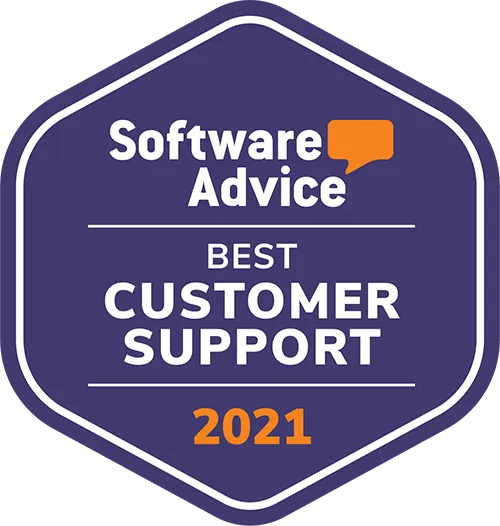It wasn’t a hard choice to select SmartSurvey. Not only did they understand what we were looking to achieve right from the start, they presented a solution that represented everything we needed.
Customer Effort Score (CES)
Customer Effort Score (CES)

What is Customer Effort Score?
For today’s modern consumer, reduced customer effort is a key driver of satisfaction and loyalty. It’s why we’ve witnessed the emergence of the Customer Effort Score survey (CES), which is based on the idea that the easier you make your business to deal with, the more likely your customers will be to return.
More general customer surveys are not sufficient to measure customer effort, you need a specialist Customer Effort Score questionnaire that asks your customers to rate the experiences they’ve had with your business, products or service from ’very easy’ to ’very difficult’. It’s for this reason that the Customer Effort Score survey has become an increasingly popular methodology employed by customer success teams.
Before getting started with your CES survey, it’s worth conducting a customer effort audit, of all your communication channels with customers, so you can examine where your customers appear to be expending the greatest effort. You can then use this information to guide the direction of your survey questions and help maximise the value you can obtain through your survey.
Customer Effort Score questions
The customer effort survey questions that you ask are an essential part of your Customer Effort Score survey and will be critical in helping you assess how easily customers are interacting with your brand across all your touchpoints. So, if you’re going to get the greatest value from your CES survey, you’ll need to think carefully about the questions you choose to use.
To help you, we’ve outlined some Customer Effort Score sample questions below, which you can potentially ask in a range of different scenarios:
For customers who had just navigated and then completed a service or support call with an operator at a large call centre, good examples of Customer Effort Score survey questions could include:
How easy did you find our call software to navigate and get through to the department that you needed?
On a scale of 1 to 5, what level of effort was required on your part to get your issue resolved with our support operator?
Similarly, customer effort score questions can be extremely valuable when you’re trying to assess how easy it is for customers to navigate, obtain information from or interact with any applications on your website. Sample customer effort questions could include:
How easy did you find our website to navigate and obtain any information you were looking for from our site?
How much do you agree with the following statement: Through your live-chat application, I was able to resolve my issue easily?
Extending the CES question
In some situations, you could even follow up your customer effort score question example with an open-ended free text question.
This could allow you to obtain a bit more detailed information about why customers chose to score you in the way that they did, or even provide suggestions about ways in which you might improve. This could be triggered by the following sequence:
To what extent do you agree with the following statement: ’Our app is really easy to use'
For those that disagreed, you could follow this up with:
If we could do anything – what do you believe we could do to make this app easier to use?
Customer Effort Score examples
Like any other customer survey method, it’s useful to know when and in what situations you’ll be able to gain the greatest value from a deploying customer effort survey. So, looking at some customer effort survey examples before you get started can be a very useful exercise.
We’ve outlined three customer effort score examples to help guide you with this below:
1) Following a purchase:
We’ve all had experiences of shopping online and having to navigate the shopping cart in order to facilitate the purchase of a product or service, which can require more effort on some retailer’s websites than others.
Consequently, sending a CES survey directly after a customer has made a purchase on your website, is a great way of finding out how easy or challenging your own e-commerce operations is.
2) Following a subscription sign-up:
Customer Effort Score surveys can also be very helpful after a customer has signed up for a digital subscription service and you’re trying to gauge how easy they are finding your services to use.
Rather than survey them immediately, you could set up a pop-up page survey to appear two weeks after they’ve signed up, to give them time to try out the key features and then investigate how easy they are finding it to use.
3) Following a customer service touchpoint:
Customers that experience frustrating or unhelpful customer service interactions are more likely to take their business elsewhere, so a CES survey can be a great way of finding out if the experience your customers are receiving is effortless or difficult.
By integrating your survey software with your ticketing support system, you can set up surveys to be automatically triggered after a customer has closed a support ticket, whether that’s via a phone call, email or live chat.

How to measure Customer Effort Score
Having issued your CES survey and gathered feedback from all your customer touchpoints, you’ll want to know how to measure customer effort, so you can better understand how easy or difficult your customers are finding these interactions. This is where the value of the Customer Effort Score metric comes in.
Also referred to as a customer experience metric, the Customer Effort Score is the final piece of your survey, which measures how easy it is for customers to do business with you.
Customer Effort Score calculation
When it comes to calculating your Customer Effort Score there are two main CES scales used by businesses.
5 point scale
Based on the original Customer Effort Score scale proposed by the creators of this metric, customers are asked to answer the question:
On a scale of 1 to 5, how much effort did you have to expend to handle your issue?
1 = Very low effort
2 = Low effort
3 = Neutral
4 = High effort
5 = Very high effort
The CES is derived by dividing the sum of all individual customer effort scores by the number of customers who provided a response. This method results in a score from 1 to 5 – the lower the score, the better, as businesses that can build a low effort customer experience are more likely to gain more loyal customers long term. See our CES calculator for an example of the 5-point scale in use.
7 point scale
The second Customer Effort Score scale to recently emerge uses a wider numbering range, with slightly different wording, moving away from the original CES customer effort and focusing more on customer ease. Under this method customers are typically asked:
On a scale of 1 to 7, how easy was it to get your issue resolved?
1 = Extremely easy
2 = Very easy
3 = Fairly easy
4 = Neither
5 = Fairly difficult
6 = Very difficult
7 = Extremely difficult
Once again, the CES will be calculated by dividing the sum of all individual customer effort scores by the number of customers who provided a response. And the lower the score, the better.
Customer Effort Score pros and cons
Being a quantitative measurement of how much effort a customer had to put in to resolve an issue, complete a task or purchase a product or service, the business benefits of running customer effort surveys and using the insight to lower your Customer Effort Score can be wide-ranging. However, whilst CES can provide valuable insights into customer experience, it may need to be used in conjunction with other metrics to get a complete picture. You should be aware of the limitations and potential biases of the metric when using it to make business decisions. Some of the key advantages and disadvantages of using CES include:
The pros
Focus on customer experience
Customer Effort Score measures how easy it is for a customer to do business with a company, which directly relates to customer experience. By measuring CES, companies can identify and prioritise areas for improvement that can enhance customer experience.
Simplicity
CES is a simple and straightforward metric that is easy to comprehend and put to use. Customers are asked a single question, and their response is measured on a simple rating scale, making it easy to analyse and report.
Actionable data
CES provides actionable data that can be used to make improvements. Companies can identify specific pain points and take steps to address them, such as improving website navigation, reducing friction in ecommerce checkouts, or simplifying new customer registration.
Predictive
Customer Effort Score has been found to be a good predictor of customer loyalty and repeat business. Customers who have a low effort experience are more likely to return again or to and recommend a company to others.
The cons
Limited insight
Customer Effort Score measures only the ease of doing business with a company and does not provide insights into other aspects of the customer experience, such as product quality or customer service performance.
Risk of bias
The results of CES surveys can be inadvertently biased by the wording of the Customer Effort Score question, the timing of the survey, or the type of customer being surveyed.
Single data point
Customer Effort Score provides a single data point that may not accurately represent the overall customer experience. It is important to use CES in conjunction with other metrics to get a complete picture of customer satisfaction.
Lack of standardisation
There is no standardisation in how CES is measured, and different companies may use different scales or interpretations of the metric, making it difficult to compare results across industries or companies.

How to improve Customer Effort Score
Collect and act on feedback
To continuously improve customer effort scores, companies should actively solicit feedback from their customers and take action on that feedback. This can involve using surveys, interviews, or other forms of feedback to gather insights, analysing that feedback to identify patterns or areas for improvement, and implementing changes based on that feedback. By demonstrating a commitment to listening to and acting on customer feedback, companies can build trust and loyalty among their customers.
Streamline the customer journey
The customer journey refers to the series of interactions a customer has with a company, from the initial contact to the final purchase. By identifying the key touchpoints in this journey, companies can eliminate any unnecessary steps and make the process as efficient as possible. This can include reducing the number of forms a customer has to fill out, providing self-service options for routine inquiries, and using automation to reduce wait times.
Improve communication
Communication is critical in any customer experience. Companies can improve customer effort scores by being more responsive and proactive in their communication. This can involve providing clear and concise information about products and services, delivering timely updates on order status, and being accessible through multiple channels, such as phone, email, chat, or social media.
Simplify product or service offerings
Companies can make it easier for customers to understand and navigate their products or services by simplifying their offerings. This can involve consolidating similar products or services into fewer options, reducing the number of features or customization options, or using plain language to describe complex concepts.
Empower customer service representatives
Frontline customer service representatives are often the face of a company and play a crucial role in shaping the customer experience. Companies can improve customer effort scores by empowering their representatives with the tools, information, and training they need to resolve issues quickly and effectively. This can involve providing access to customer data, offering personalised solutions, and allowing representatives to make decisions and take action without needing to escalate issues to higher levels.

Create a CES survey with SmartSurvey
Create
Get your Customer Effort Score survey up and running quickly:
- Take advantage of our pre-built CES question and automatic score calculations
- Extend your research with NPS and CSAT question types, or build your own follow-up questions
- Gather the context and sentiment behind effort scores
Collect
Capture CES survey responses across any channel, at any time:
- Collect online and offline feedback at any stage of the customer journey
- Automate the collection of feedback at key customer touchpoints
- Identify the channels that help or hinder your CES score, and measure the impact of process changes or other interventions
Analyse
Get straight to the insight that matters across the end-to-end customer experience:
- Analyse Customer Effort Score feedback across the entire customer journey
- Quickly visualise data and spot trends with out-of-the-box CES reporting
- Categorise and drill into complex qualitative data, sentiment, and customer anecdotes
Get started quickly with our customer effort score survey template.
How are we different?
UK based
Your data will be stored and processed here in the UK for your peace of mind.
Fanatical support
We pride ourselves on going above and beyond for our customers, providing expert advice and support whenever you need it.
You're in safe hands
Our secure platform and robust data protection measures ensure your data is safe and secure with us. We are ISO27001 and Cyber Essentials Plus certified.
We're human
We understand the importance of personal interaction, which is why we offer a human touch alongside our cutting-edge technology.
Accessibility matters
We're committed to making our surveys accessible to everyone, with a range of features to support those with disabilities.
Unlimited responses
With no limits on the number of responses you can collect, you can be sure your survey will reach as many people as possible without it being cost prohibitive.

Don’t just take our word for it
Over 500,000 users have registered to use SmartSurvey.


We couldn't be happier with SmartSurvey, we love its functionality and flexibility. This means we have been able to use one survey tool across many parts of the business.








Get in touch
We are ISO27001 certified, registered under the Data Protection Act and fully compliant with EU Privacy Laws.
Access to a knowledgeable account manager for personal assistance for when you most need it.
Our friendly design team is on hand to assist with any bespoke design and custom development requests.
We succeed if you succeed. Our goal is to help you carry out effective research and we’re here to help you achieve that.
